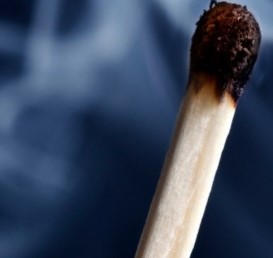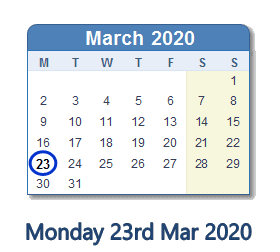
The word burnout is one of the buzz words of 2021. I hear it from clients in coaching sessions. I hear it from organisations concerned at the demands COVID has placed on its’ people. It is hardly surprising. COVID has placed people under multiple life pressures, with boundaries between work and home broken, and no certainty about what will follow. The word signals that people are reaching their energy limits, but does it mean you are burnt out? You may be pressured; you may be stressed but are you burnout?
It was in 1974 that Dr Herbert Freudenberger coined the term. He saw it as a chronic affliction of the overachiever: people who are so driven to achieve that they work to the exclusion of other parts of their life, denying signs that their way of working is detrimental to their physical and mental health. Tim Casserley, who himself burnt out whilst working for a global consultancy, concluded in his book, ‘Learning from Burnout’, that it is caused by a collision of individuals with high needs to achieve, being attracted to environments which make high demands and which reward excessive levels of commitment. Are you that person?
Is Burnout Just Exhaustion?
Burnout is more than exhaustion, though this is often how people talk about themselves in relation to their work. We can be exhausted by an intensive period of work, and recover through taking a holiday or working on a less demanding project. Burnout is more.
When the World Health Organisation defined burnout in 2019, it drew attention to 3 dimensions that need to be in place:
- Feelings of energy depletion or exhaustion.
- Increased mental distance from one’s job, or feelings of negativity or cynicism related to one’s work.
- Reduced professional performance.
It is the coming together of all 3 that leads to burnout. Being overextended in one’s role can lead to exhaustion. Being disengaged from one’s work can lead to cynicism. Being out of one’s depth leads to reduced performance. It is when all 3 come together that a red flag is waved.
The Body Control If the Head Cannot
Those most at risk of burnout are often skilled in ignoring the signs that all is not well. The signs build slowly as the body recognising that the person is operating under stress, engages the sympathetic nervous system to put the body into a state of fight or flight. The pituitary gland is signalled to send the hormone ACTH to the adrenal glands, which then allows for the release of adrenalin and cortisol. These provide the short-term stimulus the body needs to deal with the immediate stressor, but these hormones are only intended for short term use. They are not designed to be engaged day after day, week after week, month after month. Over time, the adrenal glands become exhausted and unable to respond. It is at that point that the physical signs of burn out start to appear:
- Fatigue
- Insomnia
- Irritability and anger
- Increased blood pressure
- Weight gain around the middle
- Lowered immune system showing up in viruses and frequent colds
- Headaches, stomach, digestive and bowel problems
- Type 2 diabetes
All of these symptoms can be challenged by the use of drugs, alcohol, medication, eating sugar laden foods, withdrawing from contact with others, whilst continuing to work to the same pattern.
As the individual notices that they are finding it more difficult to concentrate or that they are achieving less, the solution stays the same – work harder. As they notice that they are exhausted, the easy solution is to cut out anything which takes energy away from work. As they notice that they are feeling less connected to their work, the satisfaction that came from their efforts is taken away, so putting in that effort becomes more tiring.
Burnout often has to flare to an inferno before the body takes control forcing the individual to take a physical break, as their body protests that it can no longer support this way of living. In taking that break, the opportunity is given to re-evaluate and to make changes to how one engages with work. This can be a powerful wakeup call, as Dina Glouberman’s book, ‘The Joy of Burnout’, argues. Some, once recovered, simply return to the same pattern, with the same results, and the cycle repeats itself
Are you at risk of burnout?
Dr Freudenberger suggested the following as signs of the risk of burnout. If you fear you may be at risk then ask yourself these questions:
- Are you tiring more easily?
- Do you feel fatigued rather than energised?
- Are people annoying you by commenting that you don’t look well?
- Are you working harder and accomplishing less?
- Are you increasingly cynical and disenchanted?
- Do you often experience unexplained sadness?
- Are you forgetting deadlines, appointments or personal possessions?
- Have you become more irritable?
- Are you more short tempered?
- Are you more disappointed with people around you?
- Are you seeing family members and close friends less often?
- Are you too busy to do routine things like make phone calls or stay in touch with friends?
- Are you experiencing increased physical complaints (aches, pains, headaches, lingering colds)?
- Is joy elusive?
- Does sex seem more trouble than its worth?
- Do you have very little to say to people?
If you find yourself answering ‘Yes’ to 5-7 of these then your stress is starting to show. If 7 or more then you are a candidate for burnout and it is a signal to take action.
Can Burnout Be Avoided?
So, is it inevitable that high achievers will burn out if they work in environments which reward intense effort? Of course, the organisation has a role in this, and some organisations are beginning to look at how their working norms contribute to either illness or the loss of staff through burnout.
Relying on an organisation to reduce workloads, to increase resources, or slow the pace of change will help, but it does not guarantee that the same person with the same drivers will not repeat the pattern unless they change their relationship with work.
The Place of Resilience in Preventing Burnout
Individuals need to be their own smoke alarms. To be able to recognise the signs of danger and to be able to respond in ways which enable them to stay engaged, energised and performing. This is where resilience has a key role.
In a study in The Lancet in 2016, the authors concluded after looking at multiple studies on burnout in doctors that the key to combatting burnout was the cultivation of resilience that focussed on 3 key areas:
External Resources: Having strong connections with friends, family and in their professional relationships.
Internal Resources: Having coping mechanisms and stress management skills
Extrinsic Resources: Being able to reflect on their experiences and to derive meaning from the work that they do
Burnout is too serious a condition to use the word simply to signal that a holiday would be welcome. It is a condition that impacts on the psychological and physical wellbeing of the talented to the detriment of themselves, their relationships, their ambitions and the organisations they work with.
Resilience building is a key component in ensuring that the desire to perform well is not undermined by lacking the resources to manage a healthy relationship with work.
References
Casserley, T and Megginson, D. Learning from Burnout: Developing Sustainable Leaders and Avoiding Career Derailment, 2009, Elsevier.
Freudenberger, H.J., Staff Burnout Journal of Social Issues, Winter 1974 https://doi.org/10.1111/j.1540-4560.1974.tb00706.x
Glouberman, D, The Joy of Burnout: How the End of the World Can Be a New Beginning, 2019, Skyros Books
Regehr, C et al, Interventions to Reduce the Consequences of Stress in Physicians, The Journal of Nervous and Mental Disease, 2014, vol 202, 5, pp353-359
West, Colin P et al, Interventions to Prevent and Reduce Physician Burnout: A Systematic Review and Meta-Analysis, The Lancet, vol 388, no 10057, 2016, pp2272-2281


 It was March 23rd when the UK government put the country into its Stay Home lockdown. The day when we discovered the word ‘furlough’, and moved our social interactions into a world of multiple faces on screens. What was once the plot line of a dystopian novel became our way of living. Four months on as lockdown lurches into an uneven, confused reopening it is a good time to take stock of how your resilience is holding up.
It was March 23rd when the UK government put the country into its Stay Home lockdown. The day when we discovered the word ‘furlough’, and moved our social interactions into a world of multiple faces on screens. What was once the plot line of a dystopian novel became our way of living. Four months on as lockdown lurches into an uneven, confused reopening it is a good time to take stock of how your resilience is holding up.








